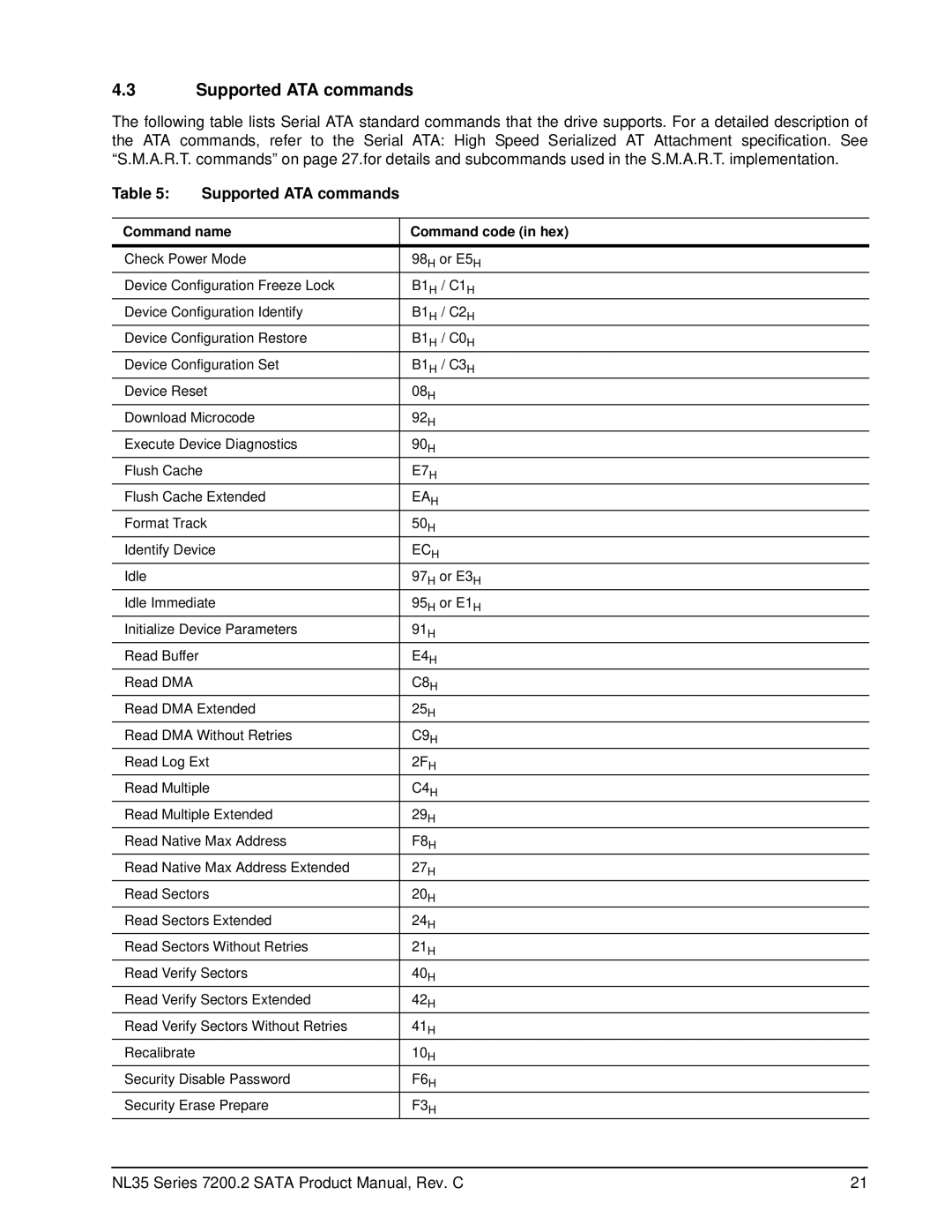ST3500641NS, ST3500841NS specifications
The Seagate ST3500841NS and ST3500641NS are robust hard drives specifically designed for enterprise environments, catering to the demanding needs of data centers, server farms, and storage solutions. These drives are part of Seagate's enterprise series and reflect a commitment to reliability, performance, and capacity.One of the main features of the ST3500841NS and ST3500641NS is their impressive storage capacity. The ST3500841NS offers 500GB of storage, while the ST3500641NS provides a slightly lower capacity at 640GB. Both drives utilize a standard 3.5-inch form factor, making them suitable for a variety of server and storage configurations. They operate at a high spindle speed of 7200 RPM, which contributes to faster data access and overall improved performance compared to traditional 5400 RPM drives.
These drives are designed to sustain high workloads and feature a mean time between failures (MTBF) rating that ensures reliability over extended periods of operation. With their enhanced error correction capabilities, data integrity is maintained even under heavy loads, making these drives ideal for use in critical applications where data loss is not an option.
The integration of technologies such as Native Command Queuing (NCQ) enhances the performance of these drives in multi-user environments. NCQ allows the drive to optimize the order of read and write commands, reducing latency and improving overall throughput. Furthermore, the ST3500841NS and ST3500641NS both feature an SATA interface, supporting speeds of up to 3.0 Gb/s, which is the standard for modern storage solutions.
Another noteworthy characteristic of these drives is their energy efficiency. Despite their robust performance, the ST3500841NS and ST3500641NS are designed to consume less power, thereby reducing operational costs and contributing to a more sustainable data center environment.
In summary, the Seagate ST3500841NS and ST3500641NS are purpose-built for enterprise applications, offering a blend of capacity, performance, and reliability. Their advanced technologies, coupled with impressive MTBF ratings and energy efficiency, make them suitable for critical applications in various high-demand environments. Whether utilized in small server systems or large-scale data centers, these drives provide the robust performance that businesses require in today’s data-driven landscape.
